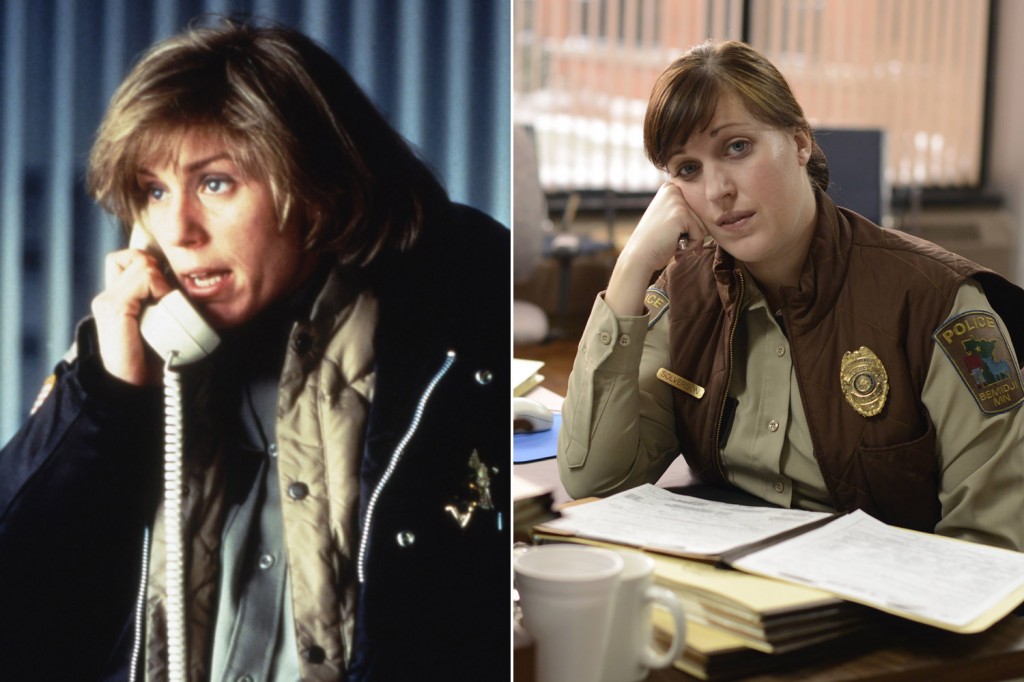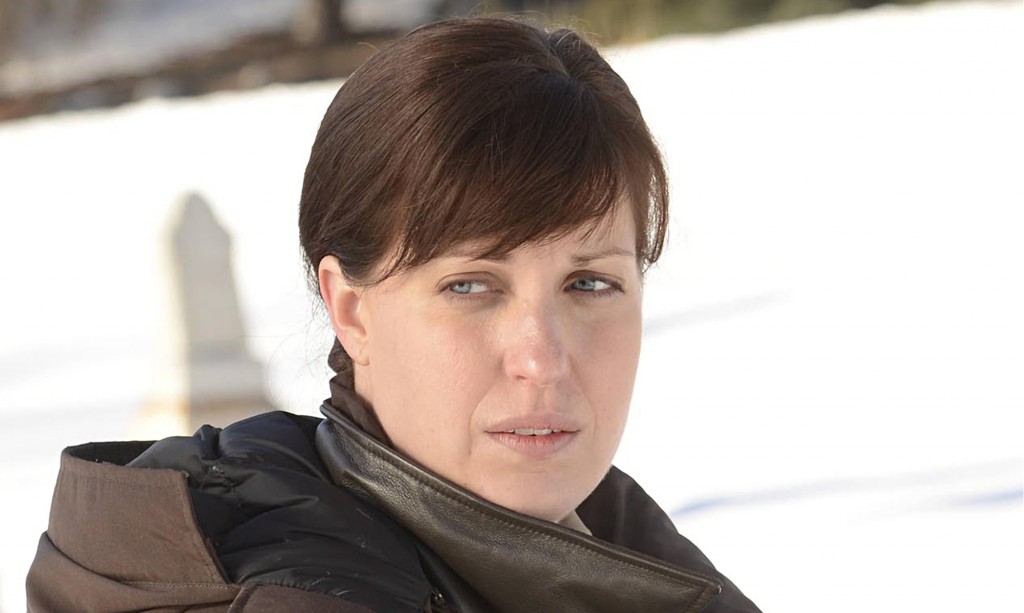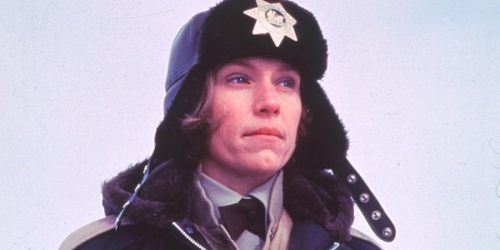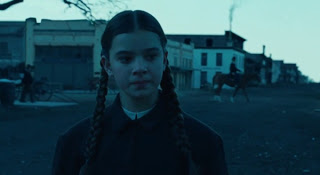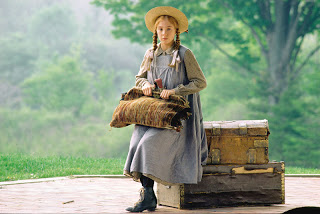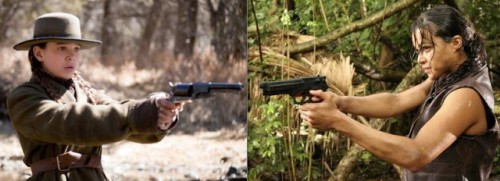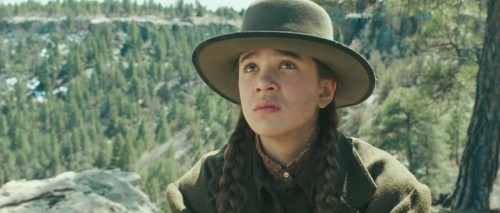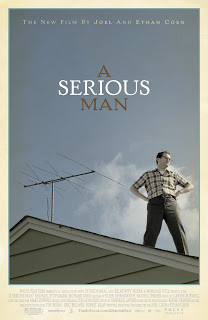At first, Jean appears like a stereotypical shrew, a misogynistic trope. The shrew often serves the purpose to show us that the male lead is a put-upon nice guy. The intention is for her nastiness to reinforce our sympathy for him. But ‘Inside Llewyn Davis’ differs in that we inevitably sympathize with Jean, or at the very least, we understand where she’s coming from. We understand her vitriol and frustration towards Llewyn. Jean’s role isn’t hollow. Beyond her rage and meanness, there’s a melancholic sadness behind her eyes. She embodies far more complexity than a mere trope.
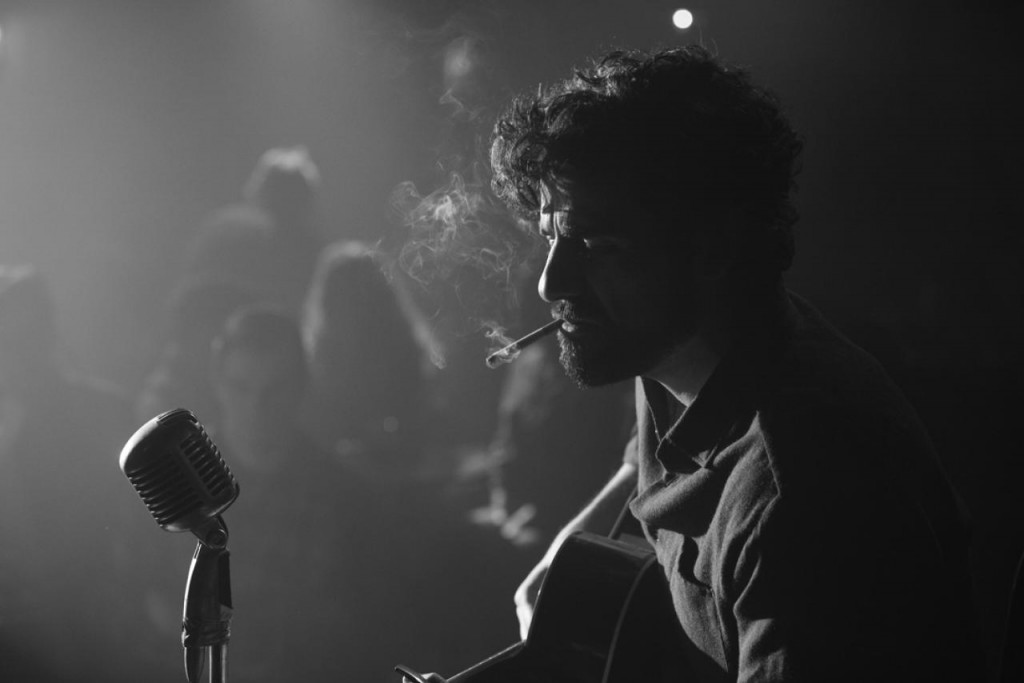
Music can wordlessly stir emotions and move us. A song can provide a glimpse into a moment in someone’s life. Music can mark the borders of a cultural era. A lyrical love letter to folk music, Inside Llewyn Davis brilliantly captures all of these.
I didn’t know what to expect. While I love folk music — the acoustic guitar, the harmonies, the raw emotion, the social justice messages simmering under the surface — I’m not the biggest Cohen Brothers fan. So it surprised me that the deceptively simple yet complex Inside Llewyn Davis is one of my favorite films of the year.
Set in 1961, the film chronicles a few days in the life of a folk musician. It takes place at a time on the cusp of Bob Dylan’s breakout, right before folk when from an intimate circle of musicians to exploding on a national and global scale.
Oscar Isaac captivates and mesmerizes as protagonist Llewyn Davis, a fictitious character but an amalgam of folk musicians Dave Van Ronk, Ramblin’ Jack Elliot, and other performers who played in NYC’s Greenwich Village. Sure, Llewyn isn’t exactly a great guy. In fact, he’s kind of an asshole. He’s self-involved. He’s obnoxious. But he instills curiosity. I wanted to see what he would do next.
The musical performances were all performed by the actors and performed live. It lends an authenticity and electricity to the film. The emotive music feels like another character in the film. Llewyn (and Oscar Isaac) comes alive when he performs. He’s a soulful and raw musician, which encompasses the evocative feeling of folk music in the 1960s.
Epitomizing many folk musicians of that era, Llewyn doesn’t want to sell out. He wants to remain a solo artist after the suicide of his musical partner. Yet he struggles to make a living out of his art. Both music manager Bud Grossman (F. Murry Abraham) and jazz musician Roland Turner (John Goodman) don’t take folk music seriously, as a viable commercial endeavor or as an art form respectively. Roland even tells Llewyn, “What’d you say you played? Folk songs? I thought you said you were a musician.” But Llewyn is determined to stay true to his art.
For many young musicians in the Village, the emerging pop-folk trend “represented the bland conformity and commercial culture they hated and were trying to escape.” Beyond music, American culture was shifting to greater commercialism. The striking yet bleak cinematography, desaturated of color, echo this theme.
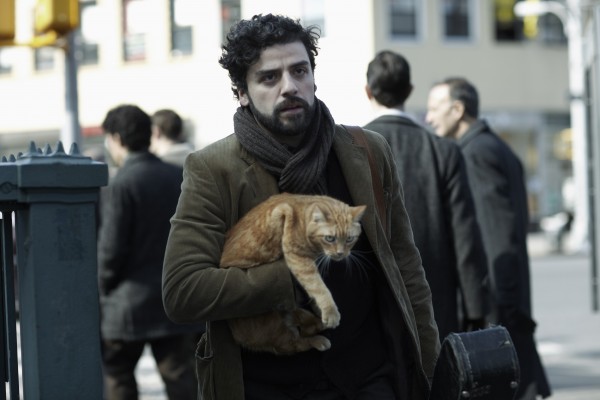
Ulysses the cat, Llewyn’s frequent companion, was my favorite part of the film. But not only because I’m a sucker for a cat (which I am). The cat’s name, a form of Odysseus, who tries to find his way home in the Greek mythological epic The Odyssey, is a fitting allusion. Llewyn is a wayward traveler physically, as he flits from couch to couch crashing at various friends’ houses, artistically, as he doesn’t feel appreciated, and emotionally, as he doesn’t really connect with anyone and doesn’t belong anywhere.
Which brings us to the women in Llewyn’s life. We see the women in the film through Llewyn’s eyes, just as we do everything else. And as Llewyn is cynical, viewing everyone and everything as a nuisance or obstacle obstructing his path, we see the women skewed in the same light.
Jean (Carey Mulligan), the most prominent female character, is a folk musician too. We see her sing on-stage with Jim (Justin Timberlake), her husband and Llewyn’s friend. Of course we’re treated to a lovely objectifying commentary by the bar owner Pappi about how he wants to fuck Jean. Nice.
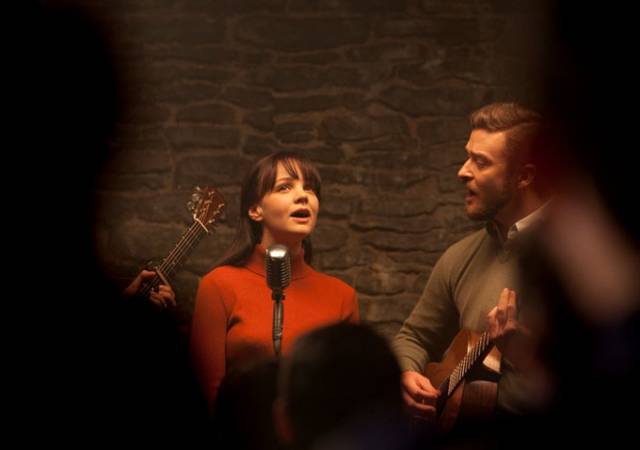
Full of wrath and fury, everything Llewyn does enrages her. Immediately hostile, she spouts venomous lines at him such as, “Everything you touch turns to shit,” and he “should wear two condoms” when he has sex. “I loved her spiteful, vitriolic rants,” said Carey Mulligan, who found the role “liberating” and “great fun.” While the entire film is told from Llewyn’s perspective – not really a surprise as the film title alludes – we do eventually understand why Jean feels the way she does towards Llewyn.
“His own worst enemy,” Llewyn is a selfish jerk. He’s unreliable and lashes out at people, sabotaging his relationships. It’s interesting because a musician is supposed to entertain people, not alienate them. Yet that’s precisely what Llewyn does to nearly everyone in his life.
When Jean discovers she’s pregnant, she fears that Llewyn might be the father of her unborn baby, catalyzing her to want an abortion. Needing the money to fund Jean’s abortion spurs Llewyn taking a job recording with Jim — an interesting scene in and of itself as it seems to encapsulate the disconnect between the folk music Llewyn wants to create and the commercial pop music Jim that’s making him money. Jean says she would keep the baby if she knew for certain Jim was the father. Despite being about Llewyn, I appreciate that the film affords Jean the opportunity to express her wishes.
As a reproductive justice advocate, I always appreciate abortion in a film as a choice people make. 1 in 3 women will have an abortion in her lifetime, not to mention the trans* men, genderqueer and non-binary individuals who have abortions too. It’s a common, routine medical procedure. Yet it’s still rare for a film or TV series to depict a character choosing and having an abortion.
At first, Jean appears like the stereotypical angry shrew, a misogynistic trope, reminding me of Rachel McAdams’ trope character in Midnight in Paris. The shrew often serves the purpose to show us that the male lead is a put-upon nice guy. The intention is for her nastiness to reinforce our sympathy for him. But Inside Llewyn Davis differs in that we inevitably sympathize with Jean, or at the very least, we understand where she’s coming from. We understand her vitriol and frustration towards Llewyn. Talking about her role, Carey Mulligan said Jean started off optimistic and hopeful, till “the world came along and hit her in the face.” Jean’s role isn’t hollow. Beyond her rage and meanness, there’s a melancholic sadness behind her eyes. She embodies far more complexity than a mere trope.

The other female characters we see in the film are Llewyn’s sister Joy and Lillian, the mild-mannered wife of his professor friend. Llewyn argues with his sister about their father and tells him to quit music, admonishing him for not having his life together. When Lillian asks him to sing at a dinner party and then (horror of horrors!) she sings along with him, Llewyn rages at her, making her cry. Llewyn is angry as Lillian is singing the harmony that his deceased partner sang. But he doesn’t want another filling his shoes. He wants to perform solo. It’s an interesting juxtaposition to Jean and Jim who encourage people to sing along with them when they perform onstage. But Llewyn must be the center of attention.
After hearing club owner Pappi say that he slept with Jean because that’s the price women pay to be able to perform onstage in his establishment (wow, swell guy), Llewyn proceeds to heckle a female folk singer. So he makes two women cry in the film but doesn’t stand up to the men in his life. Is his male posturing an attempt to assert his masculinity? Is he lashing out at women because he feel he can’t change the course of his life? Is he depressed that he’s disconnected from others? Does he feel Jean belongs to him like a possession? Is he just a misogynistic douchebag? All of the above?
Tinged with sadness and yearning, the crux of the film rests on Llewyn struggling to maintain balance, trying to do the right thing but then getting frustrated and saying fuck it. He strives to be a “true” artist rather than a commercial commodity. He tries to get Ulysses the cat back to his human family. He tries to take responsibility and pay for the abortion of not only Jean but a previous girlfriend too. He tries to be a good son and visit his father in a retirement community. He tries to reach out to people and forge relationships. But he inevitably annihilates his best intentions.
Llewyn is a filter for not only the women but everyone in the film. It’s all about him. And normally that would bother me. I can’t stand when movies don’t pass the Bechdel Test or the Mako Mori Test, when everything revolves around men. The women in the film don’t interact with one another. Okay, that is annoying. But Inside LLewyn Davis is such a captivating character study, a beautiful testament to the power of music, a brilliant exploration of art and what deems an artist a failure or success, an intriguing commentary on how we connect and disconnect with those around us, and it includes an abortion storyline and a female character transcending gender tropes — that I almost don’t care. Almost.
Megan Kearns is Bitch Flicks‘ Social Media Director and a feminist vegan blogger. She blogs at The Opinioness of the World and Fem2pt0 and she’s a member of the Boston Online Film Critics Association (BOFCA). She tweets at @OpinionessWorld.
